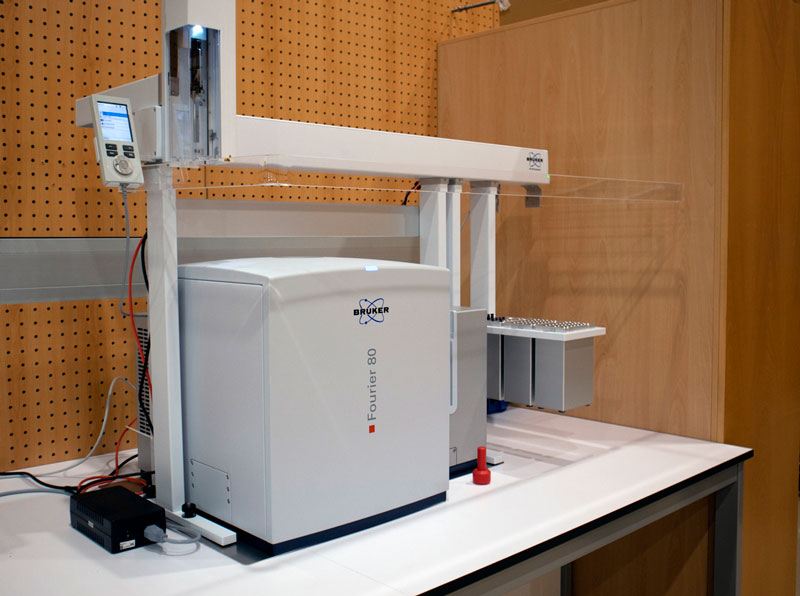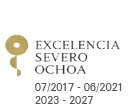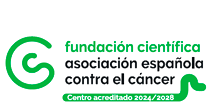
2025/03/25
Revolutionizing cardiovascular disease risk assessment in the general population via molecular blood screening
Researchers from CIC bioGUNE have contributed to an international study that enables high-precision lipoprotein analysis using low-cost benchtop NMR systems, making cardiovascular disease risk assessment more accessible.
The research, published in Analytical Chemistry, demonstrates that these compact devices can reliably quantify key biomarkers in under 15 minutes, bridging the gap between advanced molecular diagnostics and routine clinical practice.
This breakthrough could transform disease prevention and personalized medicine, particularly in resource-limited settings.
An international study has successfully translated high-field nuclear magnetic resonance (NMR) lipoprotein analysis to low-cost benchtop NMR systems. This breakthrough will enable more accessible, high-throughput cardiovascular disease (CVD) risk assessment in clinics and laboratories worldwide.
The study, published in Analytical Chemistry, was led by the Australian National Phenome Centre (ANPC) with the collaboration of CIC bioGUNE, member of BRTA. The Precision Medicine and Metabolism Lab, led by CIBERehd researcher and principal investigator Óscar Millet, contributed to the research with support from Nieves Embade, and the dedicated staff from the research group. Monash University and Bruker Biospin GmbH also participated in the study. The results represent a significant step toward integrating molecular phenotyping into routine clinical practice.
Lipoproteins play a crucial role in cardiovascular health, as their composition and concentration are directly linked to CVD risk. They are also associated with other conditions such as diabetes and obesity. However, current clinical methods focus on a limited set of biomarkers, while high-field NMR techniques provide much more detailed profiles but are restricted to specialized facilities due to their high cost.
To overcome these limitations, researchers developed a calibration model that allows benchtop NMR spectrometers (80 MHz) to accurately quantify 25 key lipoprotein markers, including total cholesterol, LDL-C, HDL-C, ApoA1, and ApoB100, in less than 15 minutes per sample. These markers are essential for assessing cardiometabolic risk and monitoring inflammatory conditions, providing clinicians with a rapid and reliable diagnostic tool.
One of the study’s key achievements was demonstrating reproducibility across three independent laboratories, validating the robustness of the proposed technology. The ability to perform high-precision lipoprotein analysis on compact, easy-to-maintain instruments represents a paradigm shift in preventive medicine.
“This is truly translational research that proves that NMR-based lipoprotein measurements can be measured outside NMR experienced laboratories” explains Dr. Óscar Millet, researcher at CIC bioGUNE and co-author of the study.
The affordability and accessibility of benchtop NMR technology could transform cardiovascular disease screening, particularly in resource-limited settings or geographically dispersed populations where centralized testing facilities may be hundreds of kilometers away. Additionally, the technology has potential applications in diabetes management, chronic inflammatory disease monitoring, and even viral infection detection.
“The advantage of using a benchtop machine is that it can be easily deployed in the analytical laboratory of a hospital and requires no special training to manage it,” highlights Dr. Óscar Millet. “This paves the way to measure lipoproteins with the granularity and sensitivity provided by the NMR technique.”
Researchers continue to refine the benchtop NMR model, expanding its clinical applications. Future research will explore its use in tracking disease progression and response to treatment through micro-sampling strategies, reinforcing the role of NMR-based diagnostics in modern medicine.
This study was supported by funding from CIBERehd, The Department of Economic Development and Infrastructures from the Basque Government, The Agencia Española de Investigación, The Spinnaker Health Research Foundation, the National Health and Medical Research Council, and the Western Australian Department of Health.
Reference: Julien Wist, Philipp Nitschke, Ricardo Conde, Angela de Diego, Maider Bizkarguenaga, Samantha Lodge, Drew Hall, Zhonglin Chai, Wenjun Wang, Sudhir Kowlessur, Marcio-Fernando Cobo, Niels Pompe, Birk Schütz, Hartmut Schäfer, Manfred Spraul, Claire Cannet, Tammo Diercks, Nieves Embade, Elaine Holmes, Oscar Millet, Jeremy K. Nicholson. Analytical Chemistry. DOI: 10.1021/acs.analchem.4c04660.
About CIBERehd
The Consortium of Biomedical Network Research Centres (CIBER) is a public research consortium created on the initiative of the Instituto de Salud Carlos III / Carlos III Health Institute, of the Ministry of Science and Innovation, to further research of excellence in biomedicine and health sciences conducted within the National Health System and the Science and Technology System. The scientific programme of the CIBER is organised around 13 thematic areas of research, including the area of Liver Diseases (CIBEREHD) and Diabetes and Associated Metabolic Diseases (CIBERDEM).
About CIC bioGUNE
The Centre for Cooperative Research in Biosciences (CIC bioGUNE), member of the Basque Research & Technology Alliance (BRTA), located in the Bizkaia Technology Park, is a biomedical research organisation conducting cutting-edge research at the interface between structural, chemical, molecular and cell biology, with a particular focus on generating knowledge on the molecular bases of disease, for use in the development of new diagnostic methods and advanced therapies.
About BRTA
BRTA is an alliance of 4 collaborative research centres (CIC bioGUNE, CIC nanoGUNE, CIC biomaGUNE y CIC energiGUNE) and 13 technology centres (Azterlan, Azti, Ceit, Cidetec, Gaiker, Ideko, Ikerlan, Leartiker, Lortek, Neiker, Tecnalia, Tekniker y Vicomtech) with the main objective of developing advanced technological solutions for the Basque corporate fabric.
With the support of the Basque Government, the SPRI Group and the Provincial Councils of the three territories, the alliance seeks to promote collaboration between the research centres, strengthen the conditions to generate and transfer knowledge to companies, contributing to their competitiveness and outspreading the Basque scientific-technological capacity abroad.
BRTA has a workforce of over 4,000 professionals, executes 22% of the Basque Country's R&D investment, registers an annual turnover of more than 300 million euros and generates 100 European and international patents per year.
See a large version of the first picture





